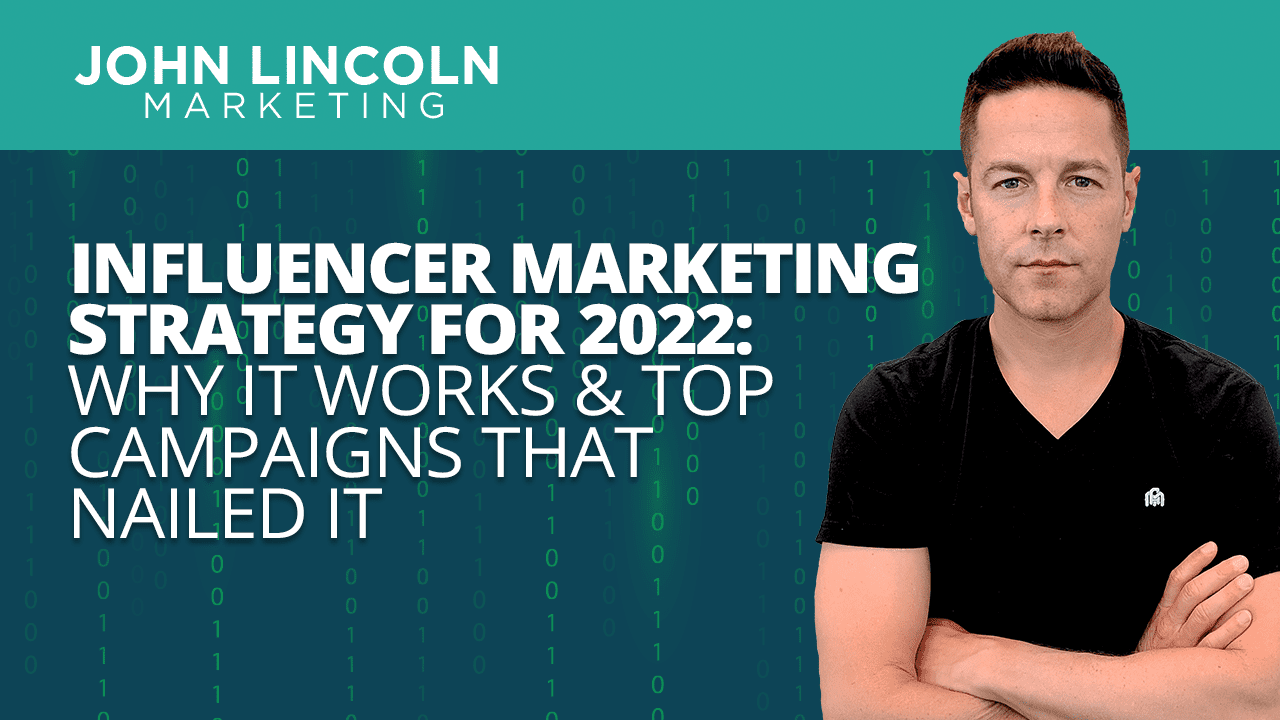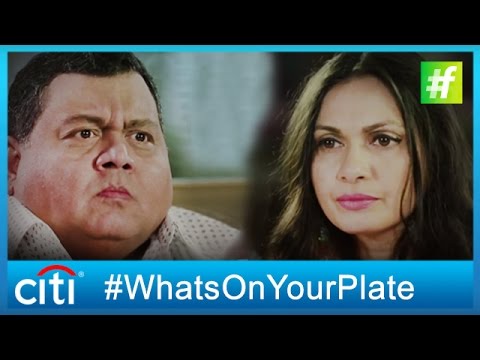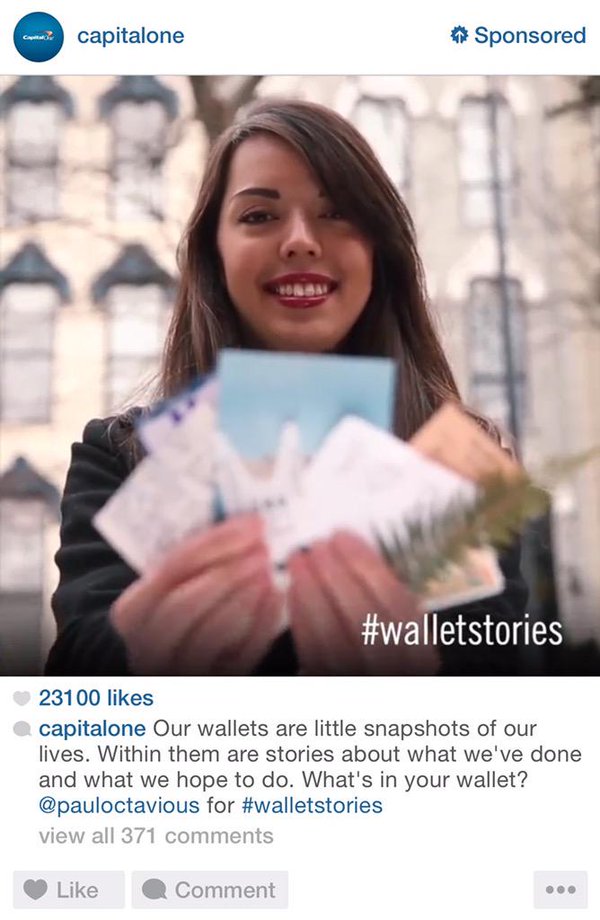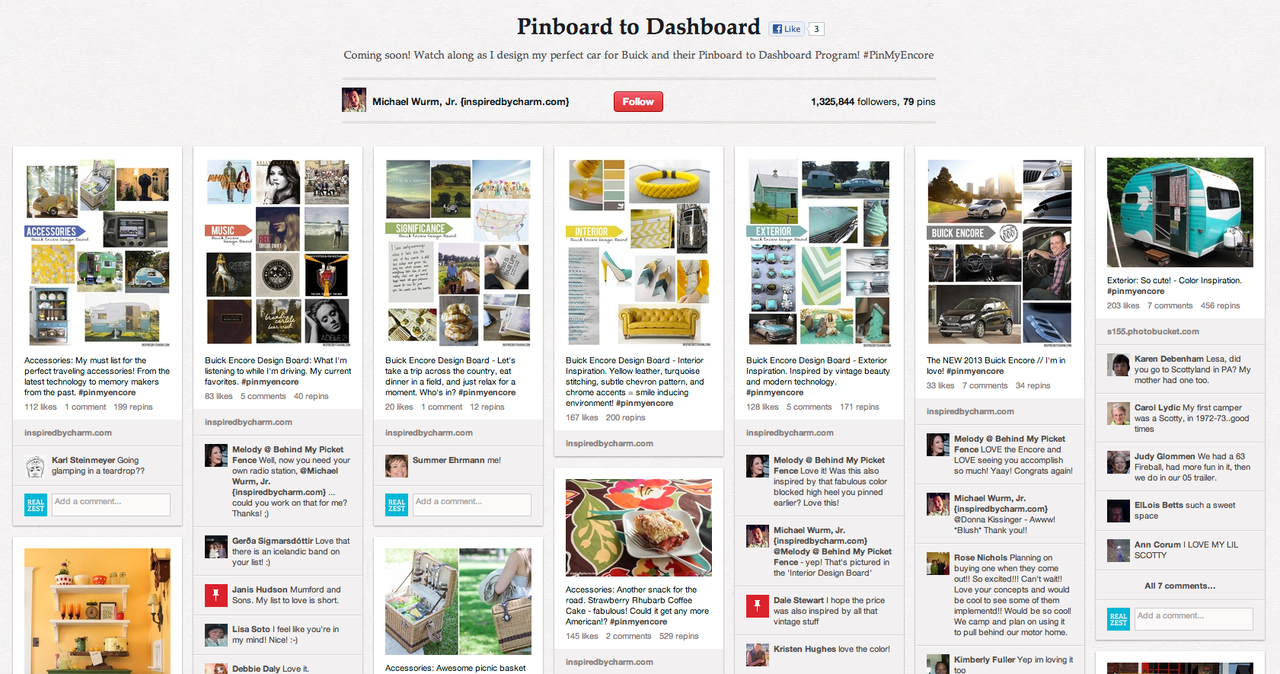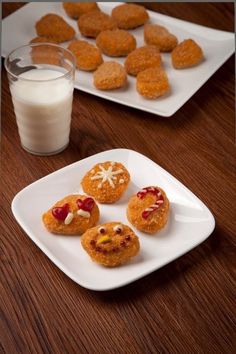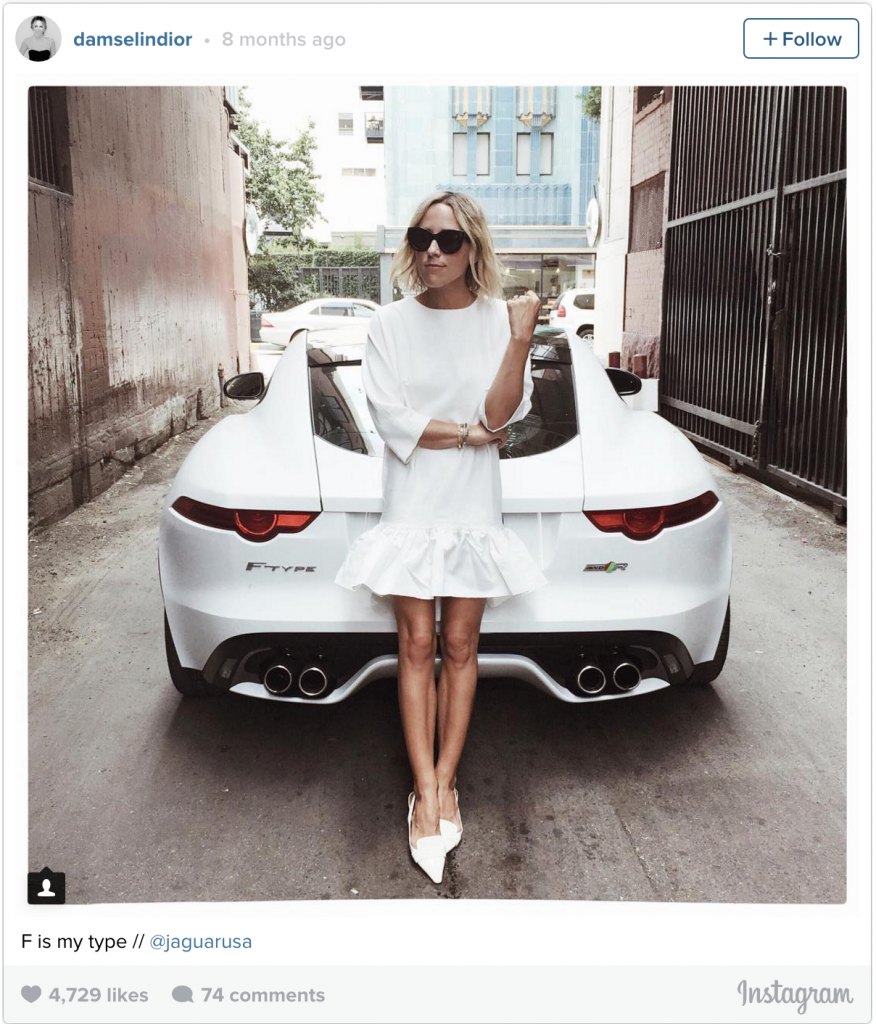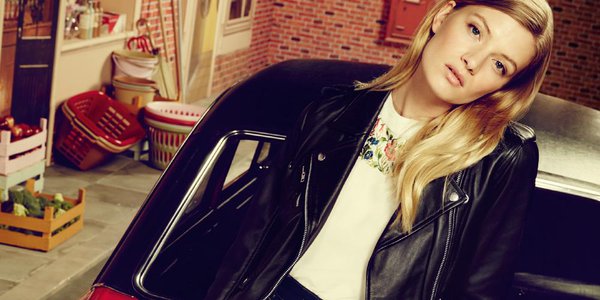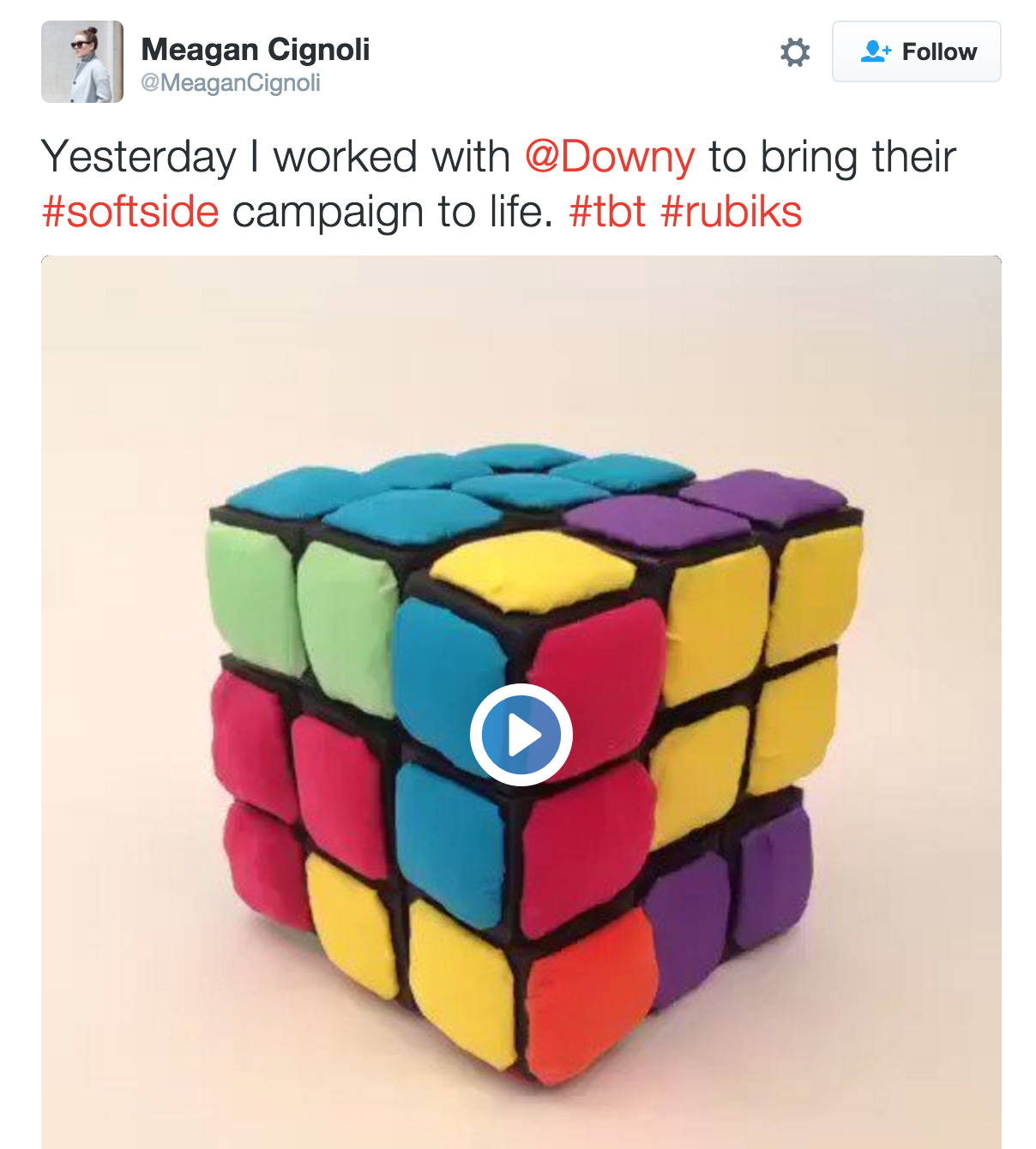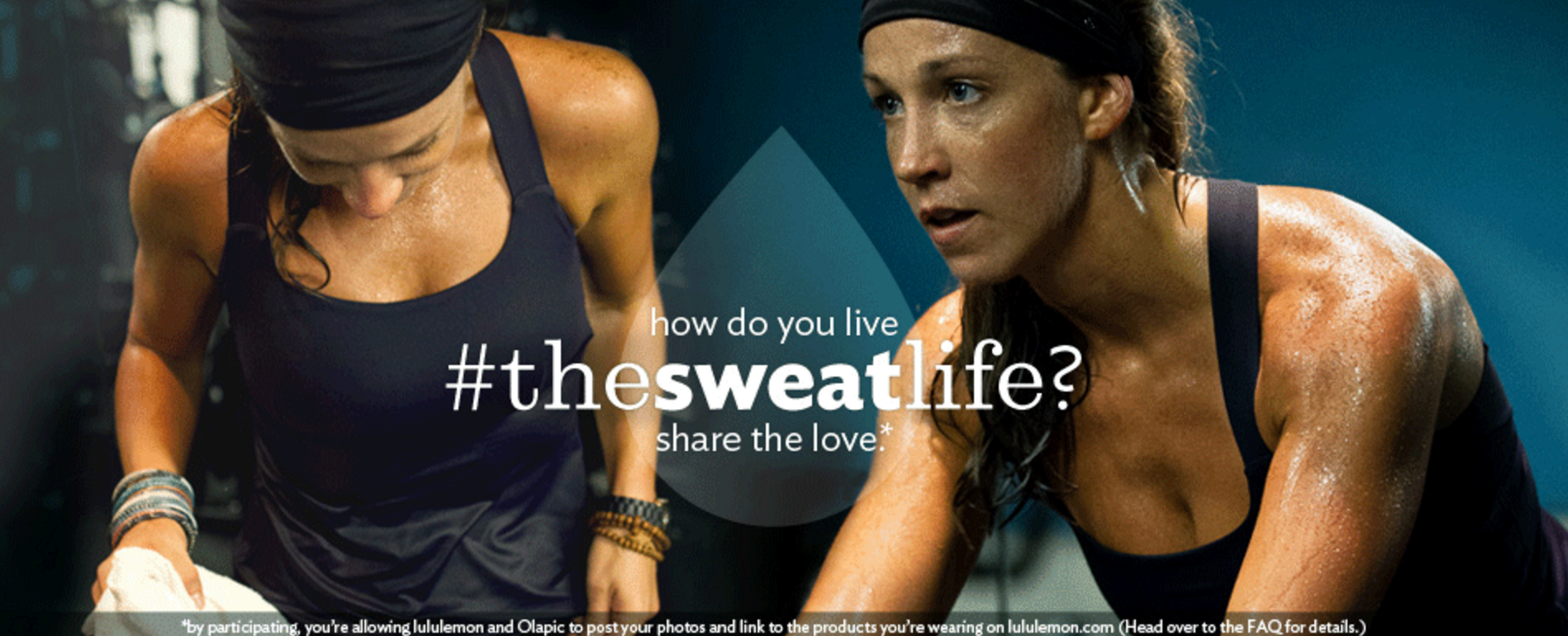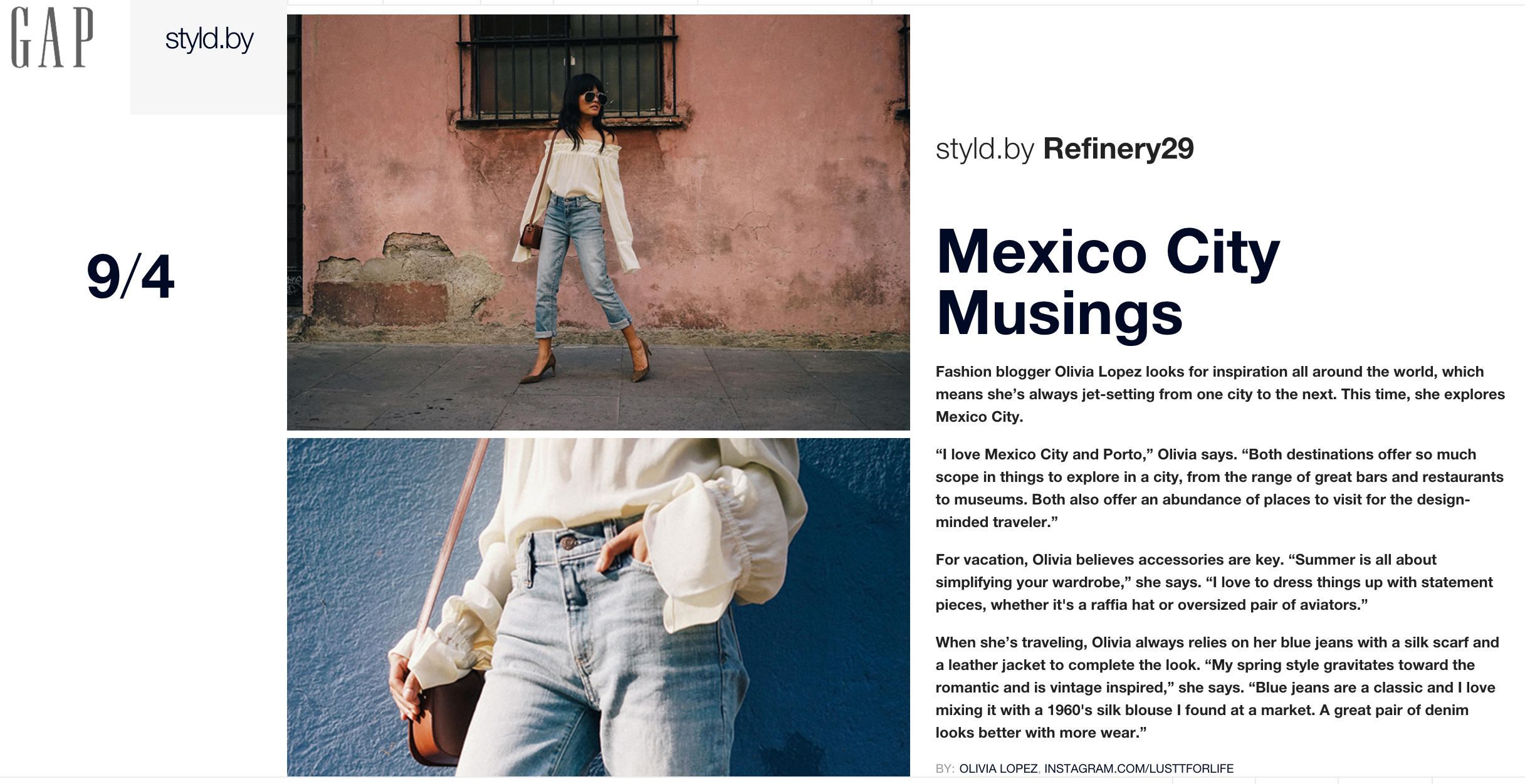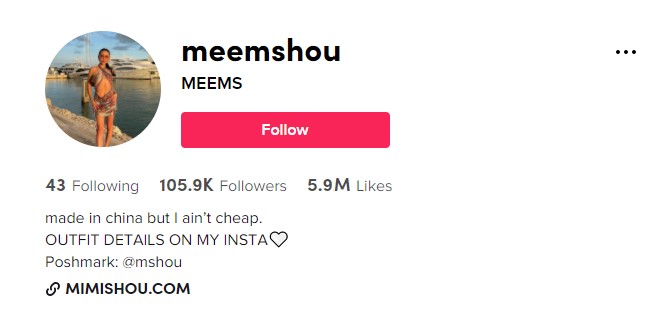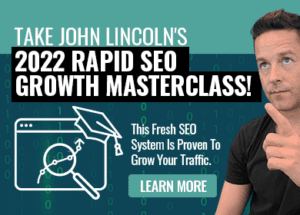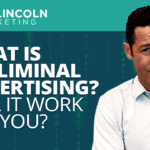Influencer Marketing Strategy: Why It Works and Top Campaigns That Nailed It
Influencer marketing for business is an absolute must. It isn’t a trend.
It’s the way things are going to be for the foreseeable future for several key reasons.
I’m going to cover these factors and show you some of the most successful recent influencer marketing campaigns so you can see just how important influencer marketing is for business.
Why Influencer Marketing Is Essential for 2022
1. Cross-Platform Creator Engagement Is Legit
For your 2022 influencer marketing strategy, one thing is clear. A loyal audience will follow creators from one platform to another.
Social networks are strong. Hopping to new social media platforms isn’t a problem for highly engaged communities. An influencer who has a presence on multiple platforms can help you expand your brand’s reach with the same amount of effort.
At the end of the day, a creator is more than what meets the eye. In 2022, they’re a full-blown entrepreneur, and influencer marketing is a strategic partnership.
2. Influencer Marketing Helps You Get First-Party Data
Google Chrome is eliminating third-party cookies entirely by 2023. Brands need to focus first and foremost on first-party data. Influencer marketing is a strong tactic for collecting first-party data. This can help foster a thriving bottom line in the long run.
As of 2021, Google’s third-party cookie phase-out schedule looks like this:
“Stage 1 (Starting late-2022): Once testing is complete and APIs are launched in Chrome, we will announce the start of stage 1. During stage 1, publishers and the advertising industry will have time to migrate their services. We expect this stage to last for nine months, and we will monitor adoption and feedback carefully before moving to stage 2.
Stage 2 (Starting mid-2023): Chrome will phase out support for third-party cookies over a three-month period finishing in late 2023.”
3. Influencer Marketing for Business Leverages Word-of-Mouth Brand Building
We already know that word-of-mouth is the way that people learn about brands. Average consumers mention 56 brands during conversations in a typical week, and one in three customers finds a new brand based on a recommendation. Customers that find your brand that way are good for business because referral customers enjoy a 37 percent higher retention rate.
Recent research shows that the recommendations made by influencers are even more powerful. Wharton School researcher Dr. Jonah Berger along with the Keller Fay Group and Experticity discovered several critically important facts about influencer marketing in their recent study:
- Influencers have conversations about purchasing recommendations up to 22.2 times more each week than others
- 87 percent of influencer buying recommendations are made face-to-face
- 82 percent of polled consumers are “highly likely” to follow a recommendation made by a micro-influencer
- 74 percent of the influencers encouraged someone to “buy it or try it”
- Only 66 percent of the general population encouraged someone to “buy it or try it”
- When it comes to influencers versus average people, influencers are believed to be more believable and credible (94 percent vs. 83 percent), more knowledgeable (94 percent vs. 84 percent) and better at explaining how the product works or could be used (92 percent vs. 83 percent)
The bottom line: influencers can communicate your brand’s message to more people with far more power, and when they do, consumers are far more likely to act on their advice.
4. Business Influencer Marketing is More Effective Than Traditional Ads
Banner ads are ineffective; overall display ad click-through rates are at less than 1 in 1,000. This is not surprising since we’re all sick of ads, right? Here in the US we see about 5,000 ads every day. Most of us tune them out, and we love to stream our media and otherwise enjoy products without ads.
Influencer marketing is not only more effective but is also a measurable alternative. Recent research has now proven that influencer marketing provides 11 times more ROI than any other kind of digital media. It is costly to create top-quality content in the first place, and distributing it is a separate problem that influencer marketing solves in an organic, cost-effective way.
5. Influencer Marketing is Social
Social media isn’t an extra for your brand now; it is what consumes expect. Potential customers connect with each other using social media and that’s also how they research their purchasing decisions. They share their experiences on social media, good and bad, and learn about products and services there too.
But for brands who want to stay competitive, social media has to be your place to engage with consumers, not just talk at them. Social media is the place to inform, entertain, and draw consumers in; influencers are the undisputed masters at all of these things. Strategic partnership with the right influencers is the best (and in some cases the only) way to get the kind of organic access to followers and engagement that most brands need. It is really the new form of business development!
6. Influencers Set Trends
Influencers don’t just talk about trends; they create them. These tastemakers decide what products are going to be hot. What they like ultimately sells.
If the right business influencers post pictures of themselves using your products, those products become part of the social and cultural fabric of the day.
While it’s possible that a paid ad could have an effect like that, it’s not likely. If Red Lobster hired Beyonce to do a commercial it might be worthwhile to them. But when Beyonce mentions Red Lobster herself in a song, the restaurant’s business spikes and it becomes a social phenomenon—because Beyonce is an influencer and she apparently likes Red Lobster.
7. Influencer Marketing is Native Advertising
Native advertising leaves the consumer experience seamless and uninterrupted, placing brands organically within the context in contrast to traditional advertising. 70 percent of online users prefer the native content approach to traditional advertising. Influencers show how a product is used or offer their own opinions about why something is better to offer the ultimate in native advertising.
8. Influencer Marketing is Good SEO
Influencer marketing naturally works to improve your SEO. For the top 20 brands in the world, user-generated social posts make up 25 percent of all search results according to The Social Media Revolution. The more social media users that mention your brand, the more relevant and popular your brand will be on Google.
9. Influencers Can Leverage New Features (Like Live Shopping)
Influencers can garner engagement on their stories and leverage profitable features like live shopping. Facebook launched live shopping in 2021, and Amazon and Pinterest have similar features for live purchasing.
In 2019, live shopping in the United Stated raked in $1 billion, and that number is increasing over the years. Expected global revenue is poised to hit $500 billion by 2023, up about 830% in four years.
10. The Creator Economy Is Only Growing
There are more creators and influencers than ever before, which means there are much more opportunities to find the right influencers for your brand.
In 2020, a whopping 50 million people identified themselves as online creators. Some experts predict that number will reach one billion people by 2026. Thanks to a democratized TikTok algorithm, it’s easy to expand your reach. Brands would be remiss to miss the fast-moving train that is influencer marketing in 2022.
What Different Strategies Can Businesses Ask Influencers to Use?
There are myriad ways you can make use of influencers for your business. Here are some popular and cutting-edge options to try:
- Video: Length and style depend on the platform and audience. For example, B2B audiences might use LinkedIn, which suggests videos of 30 seconds or less. Meanwhile, Paula Setton (@hillhousevintage on Instagram) posted this video ad that runs about a minute and promotes Penhaligon’s sweets in London:
- Post: Brand-sponsored social media posts are a traditional influencer marketing strategy. TikTok has the stretchiest algorithm for posts. Even micro-influencers with a few thousand followers (or less!) can get major reach.
- Instagram story or Facebook story: Consistent stories work best. They’re often more trustworthy because influencers are able to develop personal social relationships with their audience through them. Stories can include links, Q&As, live streams, and more.
- Unboxing: Send your influencer your product or service and let them try it out in front of the camera. Don’t let your deliverable deter you from an unboxing-like strategy—influencers can screenshot and talk about your web-based services. A try-on strategy is another approach; this is where people can try on clothes or other products (so you don’t have to).
- Hyperlocal influence: Many hyperlocal influencers have partnered with brands during COVID-19. When messaging and tone need to be on point, the right hyperlocal influencer produces high results.
- Live shopping: Influencers can offer live links and commerce experiences directly to followers. This bottom-of-the-funnel tactic helps bring in leads for your business.
- Influencer-led production: Have you ever noticed how modern podcast ads often feature hosts in casual conversation with a small verbal slip-up or two? That’s because it’s more relatable, and the same notion also applies to influencer-led social productions.
- Employees as influencers: Much like V. Spehar hosts the LA Times TikTok profile in a morning-show-esque production, employees can also serve as influencers for your brand (even on their own profiles).
Take a peek at Public, a democratized social investing app where employees post on their feed for followers to see. VP of Marketing Katie Perry is getting people excited about the platform’s new crypto feature:
- Virtual experience: We’re on the ledge of Web 3.0 and the metaverse, meaning virtual experiences will become even more integral to our digital experiences. Even the annual ANA Influencer Marketing Conference Presented by TikTok itself is a virtual experience. All you have to do is reminisce on Lil Miquela, the virtual reality influencer who took over the web in 2018, to know this thing is real. Her profile is still going strong with 3.1 million followers.
- Joint posts: Businesses in 2022 can leverage influencers using joint posts. This allows them to post a piece of content in tandem with an influencer.
17 Awesome Influencer Marketing Examples to Inspire Your 2022 Strategy
Now let’s take a look at some of the best influencer marketing campaigns.
1. Citibank – “What’s on your plate?”
The theory: Citibank’s idea was to promote its dining rewards at more than 2,000 restaurants to mobile consumers in India. The goal was for these consumers to pair Citibank with dining in their minds.
The practice: To do this the bank partnered with major food influencers Kunal Vijaykar and Maria Goretti along with Zomato, a restaurant discovery service, to serve as their marketing channel. They shot a video in which Vijaykar and Goretti argue over which foods and restaurants in Delhi and Mumbai are best and then asked people to tweet back with their favorite dishes in both cities and where to find them with the campaign’s hashtags, #WhatsOnYourPlate and #LuvToDine.
The win: Citibank chose the right influencers and a popular topic: food. They generated interest and celebrities along with “typical” consumers got involved, furthering the buzz.
2. Capital One – Instagram Takeover
The theory: Capital One wanted to do an influencer twist on its “What’s in your wallet” campaign using Instagram, so they handed over their account to three popular Instagram influencers for five weeks. The goal was for the influencers, photographers Zach Rose, Paul Octavious, and Kimberly Genevieve, to take photos of the interesting, less utilitarian things that might be in their wallets to personalize the campaign and generate interest.
The practice: The more than 750,000 total followers of these three influencers saw mementos over the course of the five weeks, usually in personal settings, sometimes while the influencers were traveling. For example, they showed pictures of tickets, photographs, and love letters that they were keeping in their wallets.
The win: Capital One earned a 3 percent gain in overall image perception, and among consumers ages 45 and older they saw a 25 percent rise in ad recall—even though many people see influencer marketing as something that is useful for targeting millennials alone.
3. Buick – “Pinboard to Dashboard”
The theory: Buick wanted to partner with Pinterest influencers to associate its brand with luxury, specifically its Encore luxury model. Using influencer marketing for business, they hope to build their followings.
The practice: Buick worked with nine major Pinterest influencers—none of whom are in automotive spheres—to create mood boards.
The win: The influencers are in design, food, and style, and this partnership with movers and shakers in different spheres lent the project novelty, originality, and creativity—not to mention literally millions of new followers for Buick.
4. Tyson Foods – “Why Should Cookies Have All The Fun?”
The theory: Since 1 in 3 bloggers are moms and more than one-third of moms have bought something online after receiving a recommendation, Tyson wanted to tap into the mommy blogger community.
The practice: Tyson asked mom bloggers for fun holiday ideas for using their chicken nuggets and moms all over the web gave them chicken nugget snowmen, santas, and other creations.
The win: The campaign got 8 million impressions on social media, and Tyson’s sales grew by 42 percent in the few weeks following the campaign.
5. Tata Motors – #GetSetBolt Campaign
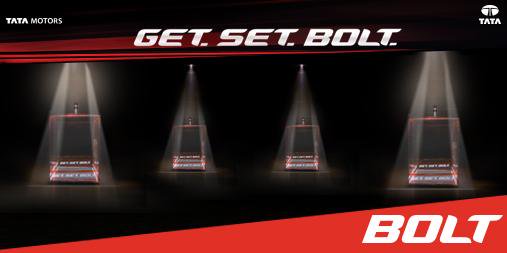
The theory: In time for the launch of the new Tata Bolt hatchback, Tata Motors wanted to use the reality show in a digital format starring four popular Twitter influencers to create buzz among its target consumer audience of new-age millennials.
The practice: The digital campaign, called ‘Get Set Bolt,’ included four Twitter influencers: Abhishek Asthana (@GabbbarSingh), Apoorv Sood (@Trendulkar), Ashwin Mushran (@AshwinMushran), and Rahul Nanda (@RahulNanda86). The game show worked by the four getting “locked” into glass cubicles; they could win a brand new Bolt by winning the symbolic Bolt key by creating the most digital buzz. Each influencer’s top supporters could also win prizes to foster more participation.
The win: Users all over Twitter loved the gamification and the user-generated content created by these heavy-hitting influencers. The constant video and text updates about the show were extremely popular and maintained major buzz throughout the contest.
6. Jaguar – “F is my Type”
The theory: Jaguar saw that it had become too exclusive to get the sales it needed, so it used a young, fashionable influencer to refresh its brand image.
The practice: Jaycie Duprie, 29-year-old Instagram star and “Damsel in Dior” fashion blogger posed in white to promote a white F Type coupe. She had more than 265,000 followers at the time who could all see the Jaguar coupe as a fun, youthful ride during her summer campaign.
The win: This was the opposite of what everyone expected from Jaguar and it worked; the campaign was in action during summer of 2015 and September of 2015 saw the best sales ever for the F Type.
7. Ola – “The Prime Time”
The theory: Ola, a cab service, used influencer marketing to create buzz surrounding its revamped business-class offerings; the plan was for celebrities to drive customers certain customers around.
The practice: Ola’s new “Prime” cars are nice, offering free Wifi and highly-rated drivers, but during the campaign some customers were picked up by celebrities like actor and supermodel Milind Soman, standup comedian and musician Abish Mathew, and Formula One driver Narain Karthikeyan. This created lots of buzz and some funny footage (like this clip of customers being driven byNarain Karthikeyan and entertained by the host) for sharing, too.
The win: This generated lots of social media buzz and also a huge spike in bookings once the campaign started and people found out they had a chance to meet these celebrities.
8. Oasis Fashion – #UpMyStreet
The theory: Oasis Fashion wanted to expand its reach into different markets, so it decided to take direction from influencers on how to engage more American buyers.
The practice: The brand started a Shopping Links/ Instagram collaboration using the hashtag #upmystreet. They asked bloggers from Brooklyn, Los Angeles, Dallas, Miami, and other important markets to Instagram shots of them wearing Oasis outfits at their favorite neighborhood hangouts.
The win: Each campaign post got more then 400 likes on average, and Oasis itself grew its Instagram following to more than 116,000. According to Alexa.com, in the months following the campaign its web traffic in the US grew by 6 percent. This is an excellent example of leveraging a larger group of micro-influencers to great effect.
9. Downy – “The #SoftSide of Life”
The theory: Downy scoured the Internet for soft sculptures to share so that it could basically talk about all things soft and get in on the softness conversation.
The practice: Throughout the campaign, the brand shared the soft sculptures using the #SoftSide hashtag all over the digital space. This brought influencers into the conversation because those making soft sculptures use the hashtag. Downy could then prompt them to discuss what the soft side of life means to them.
The win: This was a fun, creative campaign with appealing visual elements which pulled twice as much social media engagement for Downy compared with pre-campaign numbers. According to Nielsen, the campaign earned 50 million impressions for Downy in industry publications and a 5-point increase in brand favorability.
10. Lululemon – #TheSweatLife
The theory: Lululemon tapped into the influencer culture among yoga enthusiasts and engaged in micro-influencer marketing by engaging with its most active consumers to turn them into customer advocates.
The practice: The company gathered and aggregates inspirational customer photos using its #TheSweatLife hashtag on the Olapic platform ending up with photos from more than 7,000 influential customers. These photos gained more than 40,000 views over the course of only nine months.
The win: 2015 was a great year for Lululemon, with double-digit increases in net revenue.
11. Gap – Styld.by
The theory: Influencers who blog are early adopters and tastemakers, and they have more clout with shoppers than many traditional media outlets. Velocity Digital found that 61 percent of consumers have based a decision to buy on a blog.
The practice: Gap decided to create a website to seize this power by including influencer content instead of traditional content: Styld-by.com.en-uk. Its shoppers can read content from influencers, bloggers, journalists, social media stars, and others, and they can easily share anything they find.
The win: Styld.by gives consumers lots of information about the Gap brand, but not from the Gap—the sources are credible and influential.
12. Smithsonian — #TheFutures
The theory: Smithsonian wants to promote its Futures exhibit, which runs through July 2022. It “presents nearly 32,000 square feet of new immersive site-specific art installations, interactives, working experiments, inventions, speculative designs, and “artifacts of the future,” as well as historic objects and discoveries from 23 of the Smithsonian’s museums, major initiatives, and research centers.”
The practice: The museum organization brought in influencers like drag queen Pattie Gonia (@pattigonia on Instagram) to speak at events and garner digital and in-person engagement. Smithsonian is using the hashtag #theFUTURES to get the word out.
The win: Just weeks after the exhibit launched, the hashtag #theFUTURES garnered thousands of hits.
13. REI — Miranda In the Wild
The theory: Outdoor retail co-op REI aims to give practical outdoor tips and tricks through influencer Miranda in the Wild (@mirandagoesoutside on Instagram).
The practice: The Miranda in the Wild series for REI helps build authenticity and usefulness, ultimately engaging different and more audience members. Longer videos align with a vlog-style vision, borrowing from YouTube.
The win: A solid 27,300 people viewed the latest Miranda In the Wild show on Instagram. The brand’s new #REIpartner hashtag is also gaining steam.
14. Ellevest — FinTok Influencer Campaign
The theory: Ellevest wants to attract young women for its women investing platform that makes building wealth easy.
The practice: TikTok is the place to build their audience, and they’ve partnered with tons of influencers to help achieve their goal. The influencer marketing example from Meems (@meemshou on TikTok) is just one of many.
The win: Ellevest uses influencers to generate content on their own page. Combined with insight from employees (including founder Sallie Krawcheck), the brand has a robust content strategy and reposts on Instagram. Combined, the two platforms have 346,800 followers.
15. H&M — #LoopIt
The theory: H&M wants to fight its fast-fashion label and be viewed as a more sustainable brand.
The practice: The clothing company used Masie Williams (an actress from Game of Thrones) to serve as their Global Sustainability Ambassador and used the hashtag #loopit for people to show how they reuse products. They also built the H&M Loop Isle on Animal Crossing, hiring influencers to visit the island and tell their Instagram followers all about it. It’s a totally unique approach to influencer marketing.
The win: H&M has officially entered the “circular economy” conversation. The brand took to Animal Crossing to debut an all-vegan collection in November 2021. “Eleven pieces from the ‘Co-Exist Story’ collection have been recreated in virtual form and will be showcased in the in-game fashion show,” H&M says.
16. Dunkin’ — The Charli
The theory: As Dunkin’ Donuts trimmed its name to become just Dunkin’, it needed to spice things up. That’s why it hooked up with natural Dunkin’ fan and TikTok queen herself Charli D’Amelio.
The practice: Charlie (@charlidamelio on TikTok) posted a series of videos for Dunkin’ and the store named a drink after her. In mid-2021, the remixed Charli Cold Foam dropped, rejuvenating the partnership.
The win: The Charli x Dunkin’ merch collection is still going on, which is proof enough that this year-and-some-change influencer marketing example has been worth it. From shoelaces to a limited edition cold brew tap, the pair are earning big.
17. BMW – The Power of Action
The theory: BMW is competing against the electric vehicle segment, which means it needs to ramp up its sustainability branding. In comes the Power of Action.
The practice: With a selection of premium EVs, BMW created the Power of Action influencer marketing strategy to help spread the word about the i4 and iX models. Perhaps the most notable influencer the brand worked with was the band Coldplay.
The win: BMW posted significant sales growth in the first nine months of 2021. The automotive brand more than doubled its sales of fully-electric vehicles and stayed on the “electro-offensive.”
FAQs for Businesses Using an Influencer Marketing Strategy
1. What are the key strategies in influencer marketing?
Identify your audience. Find influencers that reach your audience. Prioritize the right platforms. Stay authentic. Giving influencers control over the creative side of things shows trust in their personal brand strategy.
2. Why is influencer marketing an effective strategy?
The most obvious benefit of influencer marketing is the ability for businesses to reach a range of audiences. Insight from influencer marketing campaigns can help drive entire marketing plans.
3. I’m part of a business. How do I start partnering with Instagram influencers?
Instagram influencer marketing requires creating a list of prospects, developing personalized pitches for each prospect, and designing a campaign that takes those specific influencers into consideration. As with any marketing initiative, you’ll want to set key performance indicators (KPIs) and track your metrics. That way, you can know if you’ve achieved your definition of success.
4. What’s the average payment for Instagram influencer marketing?
Price varies tremendously based on the audience, region, and industry—as well as the influencer’s number of followers. In 2021, nearly a quarter (23%) of marketing teams spent $50,000 or more per year on influencer payments. Nearly a tenth (9%) were prepared to spend half a million dollars.
5. Should you cold pitch content creators and influencers?
As a business, it’s often best to approach an influencer with a warm relationship, meaning you will want to nurture that relationship a bit before diving in for the ask. This helps you avoid coming off as spammy and is more likely to generate lasting, authentic, and profitable partnerships (for both parties).
The Bottom Line On Influencer Marketing for Business
There’s no question that influencer marketing is the way for all brands, big or small, to get more traction in the market. These are the campaigns that are working right now, and this isn’t going to change.
Can you think of the most recent time an influencer’s opinion caused you to make a purchase or add something to your shopping list? Let me know in the comments.
Want to learn more about influencer marketing? Learn more about my book.
Welcome To John Lincoln Marketing
Welcome to John Lincoln’s personal website. On this website, we offer courses by John Lincoln, review software, publish articles and videos. You can also learn about John Lincoln’s books, films, book him to speak and contact him. John is directly associated with many of the businesses mentioned on this website and freely discloses this information.
About the Author

John Lincoln is CEO of Ignite Visibility, one of the top digital marketing agencies in the nation. Ignite Visibility is a 4x Inc. 5,000 company. Ignite Visibility offers a unique digital marketing program tied directly to ROI with a focus on using SEO, social media, paid media, CRO, email, Amazon and PR to achieve results. Outside of Ignite Visibility, Lincoln is a frequent speaker and author of the books “Digital Influencer” and “The Forecaster Method.” Lincoln is consistently named one of the top digital marketers in the industry and was the recipient of the coveted Search Engine Land “Search Marketer of The Year” award. Lincoln has taught digital marketing and Web Analytics at the University of California San Diego since 2010, has been named as one of San Diego’s most admired CEO’s and a top business leader under 40. Lincoln has also made “SEO: The Movie” and “Social Media Marketing: The Movie.” His business mission is to help others through digital marketing.
Get Social
Recent Tweets
Contact John Lincoln
Want to get in touch with John Lincoln? Click Here To Reach Out.
Related Posts
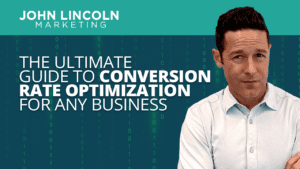
The Ultimate Guide to Conversion Rate Optimization for Any Business
Whether you’re a seasoned marketer or just starting out, conversion rate optimization (CRO) is a powerful tool that can boost your sales, leads, and overall
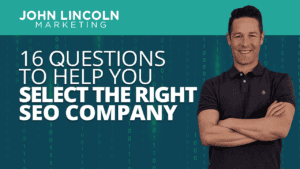
16 Questions to Help You Choose an SEO Company
Feeling overwhelmed by the sea of SEO companies out there? You’re not alone! Choosing the right partner is crucial for achieving your online marketing
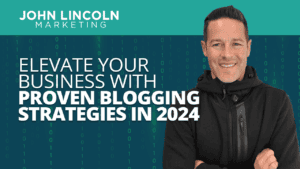
Elevate Your Business with Proven Blogging Strategies in 2024
In 2024, business blogging is not only still relevant – it’s a critical component of any content marketing strategy. Companies that blog generate 67% more
